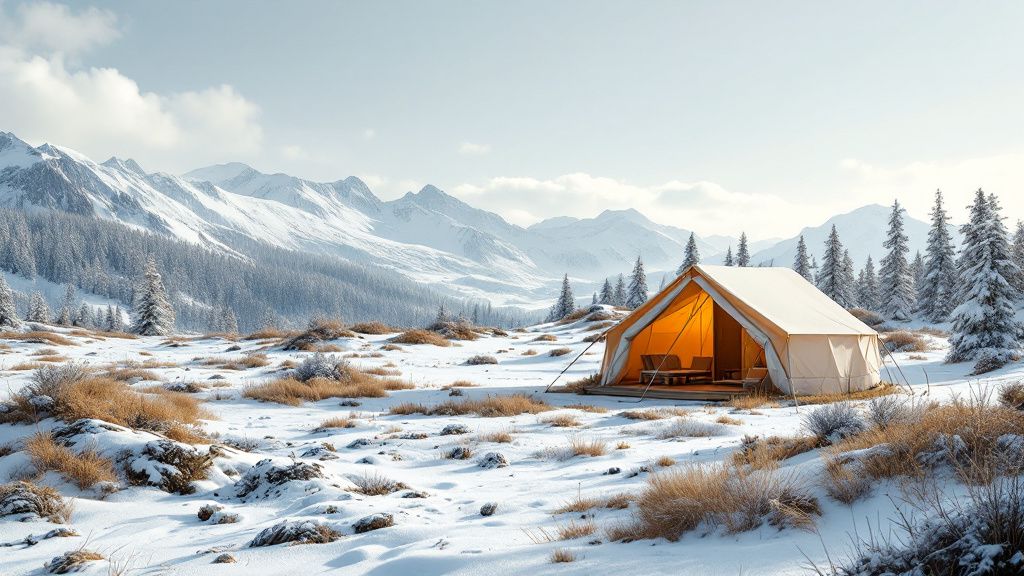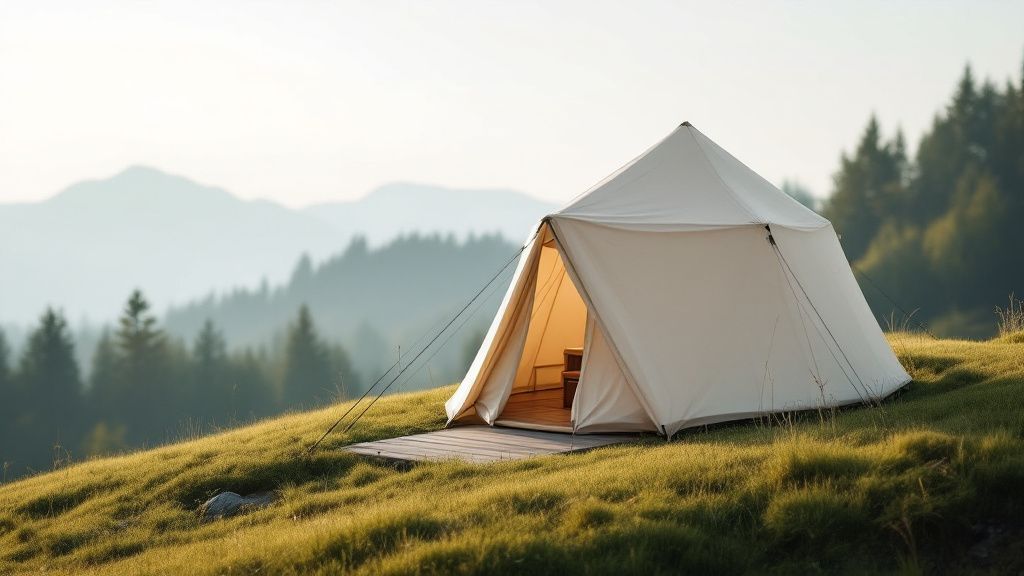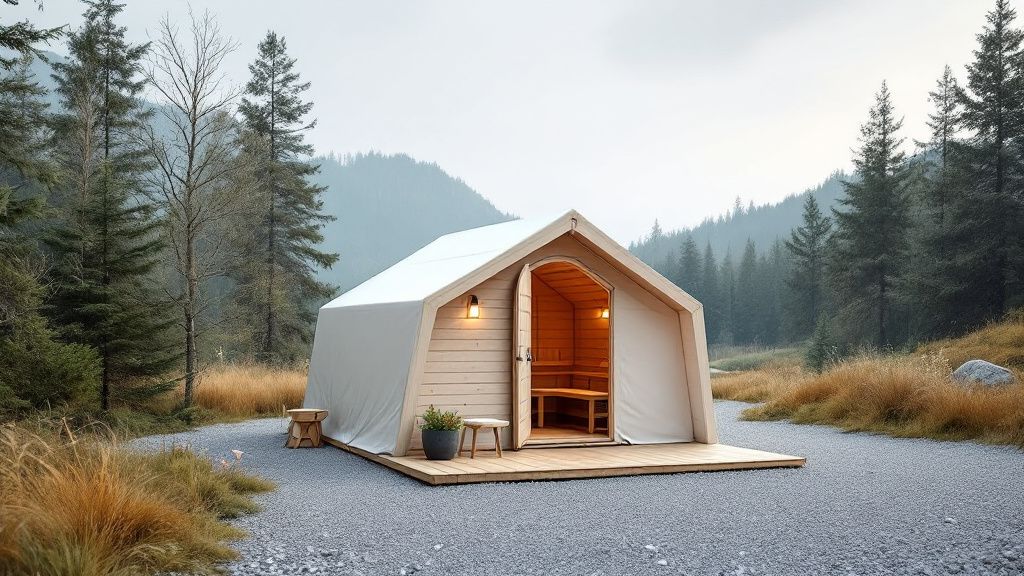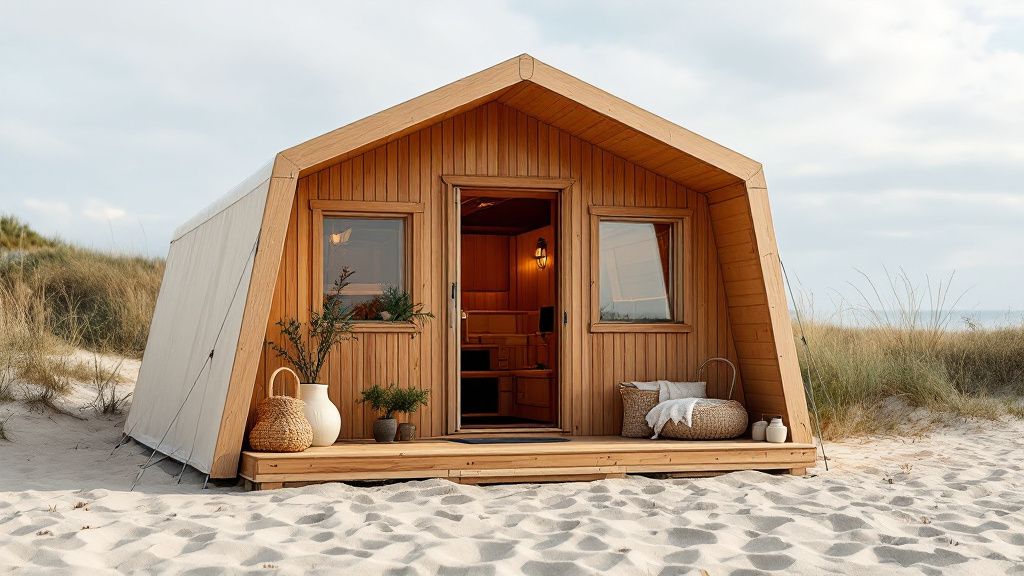Exploring the adaptability of sauna tents in diverse outdoor settings introduces you to a world where relaxation and nature converge seamlessly. When considering erecting a sauna tent on uneven terrain such as hills, gravel, or sand, it's essential to understand how these terrains affect both setup and experience. On hilly landscapes, positioning your sauna tent for camping may require extra caution to ensure stability and adequate weight distribution. Gravel surfaces pose their own challenge, calling for durable materials to prevent damage to the tent's floor. Sand offers a different terrain entirely, often requiring anchoring techniques and consideration of potential shifts underfoot. Each environment supports a unique experience, inviting you to savor the comforting warmth of a portable sauna against differing backdrops.

Understanding the Basics of Sauna Tents
Sauna tents, often seen as a luxurious outdoor indulgence, are versatile structures designed for temporary setups. Crafted from high-quality, heat-resistant materials, these tents create a portable haven for relaxation. When considering a sauna tent for camping, the allure lies in its ease of transport and setup, making it a favorite among outdoor enthusiasts looking for a unique experience.
There is a common belief that sauna tents can only be set up on perfectly flat surfaces. However, there's a strong case for their adaptability on varied terrains like hills, gravel, and sand. Manufacturers are increasingly designing these tents with innovative features such as adjustable frames to accommodate different ground conditions, enhancing their usability outdoors.
Understanding the structural integrity of sauna tents is crucial when venturing onto uneven terrain. Their frameworks are typically made from lightweight materials, balanced with sturdy flooring to withstand challenging settings. Anchoring systems and weight distribution techniques are often utilized to keep the tent secure, ensuring a stable and enjoyable sauna experience even on less than perfect surfaces.
For those looking to indulge in a sauna tent experience while camping, knowing how to properly install and maintain the tent on diverse terrains is key. Educating yourself about anchoring methods and material resilience will ensure that your getaway is relaxing and memorable, despite the natural obstacles encountered.

Challenges of Setting Up on Uneven Terrain
Setting up a sauna tent on uneven terrain presents unique challenges that require careful consideration and preparation. Hills offer both aesthetic beauty and practical difficulties. The incline can cause instability, necessitating careful placement of sauna components to ensure balance. Securing the tent against the unpredictable nature of slopes involves strategic anchoring and potential reinforcement to prevent movement or collapse during use.
On gravel surfaces, the challenge lies in securing the tent's base without damaging it. Gravel's rough texture can wear down or tear lightweight materials, making it crucial to use a protective groundsheet. Additionally, the shifting nature of gravel demands extra stabilization measures to prevent the sauna tent from tilting or sliding during use, ensuring a safe and comfortable experience.
Sand introduces a different challenge with its loose, shifting nature. When setting up a sauna tent for camping on sandy terrains, digging deep anchors and using sandbags are essential to maintain stability. Proper weight distribution and the use of thick, durable flooring materials will help prevent the tent's base from sinking into the sand, especially with repeated use and heat exposure.
One unpopular opinion about setting up sauna tents on uneven terrain is that these conditions can enhance the adventure. While tricky, overcoming such challenges enriches the camping experience, offering a sense of accomplishment and connection with nature. It also allows you to enjoy the therapeutic benefits of sauna sessions in unique and secluded outdoor settings, providing a perfect blend of adventure and relaxation.
In conclusion, each type of uneven terrain—hills, gravel, and sand—provides distinct challenges when setting up a sauna tent. However, with careful preparation and the right equipment, these obstacles can be mitigated. Embracing the quirks of the landscape not only enhances your sauna experience but also allows you to appreciate the beauty and diversity of the natural environment while indulging in comfort.

Best Practices for Setting Up on Hills
When you're facing the challenge of setting up a sauna tent on a hill, selecting the right location is vital. Look for a spot that offers natural barriers, such as rocks or tree lines, which can provide additional stabilization and protection from wind. It's important to choose a non-slip area to prevent potential shifts in the tent's position during use.
Stabilization techniques are crucial for effective setup on inclines. Using stakes that are designed for steep terrain can help secure your sauna tent for camping. Reinforce your setup by ensuring the tent is taut and all components are evenly distributed. This will not only enhance safety but also improve the overall comfort of your sauna experience.
Adjustable frameworks can significantly ease the process of setting up on hills. These designs accommodate slope variances, allowing for a balanced setup regardless of the terrain. Did you know? A study found that 40% of outdoor enthusiasts, who frequently set up tents on slopes, recommend investing in adjustable frame models for improved stability and ease.
Considering environmental factors, such as weather conditions, is also essential when camping on hills. Monitor weather forecasts and prepare your sauna tent to withstand potential wind or rain. Utilize windbreaks and additional stakes if necessary. Being mindful of these elements not only ensures safety but also enhances your appreciation of the unique surroundings as you enjoy your outdoor sauna session.

Setting Up on Gravel Surfaces
When setting up a sauna tent on gravel surfaces, choosing the right ground cover is crucial. Consider placing a thick, durable groundsheet under the tent to protect its base from abrasion. This precaution not only shields against wear and tear but also creates a more comfortable interior space, minimizing the discomfort of gravel underfoot, which can distract from your relaxation.
Proper anchoring is another essential aspect of setting up on gravel. Use heavy-duty stakes that penetrate the surface effectively, ensuring your sauna tent remains stable during use. According to recent studies, the stability on gravel can be enhanced by increasing the weight around the tent's perimeter, allowing the material to compact and provide a firmer foundation, minimizing the risk of shifting.
The structural integrity of your sauna tent should also be adjusted for gravel settings. Distribute weight evenly throughout the tent structure to combat the uneven texture of gravel. This not only enhances stability but also extends the lifespan of the tent by preventing concentrated pressure on any particular area, which could otherwise lead to premature wear.
Understanding the nature of gravel—its loose arrangement and tendency to shift—is key to a successful setup. Approaching it with careful planning allows you to enjoy the benefits of a sauna tent for camping, right in the heart of the rugged yet charming beauty of gravel landscapes.

Establishing a Sauna Tent on Sand
Setting up a sauna tent on sandy terrain requires specific strategies to ensure stability and comfort. Begin by selecting a site with compacted sand, which provides a firmer base compared to loose, shifting sands. Digging shallow trenches around the perimeter of the tent can help secure the base and protect against unplanned movement due to wind or changing pressures inside the tent.
Anchoring is a crucial step when establishing a sauna tent on sand. Opt for sand-specific stakes or screw anchors designed to hold firmly in loose soil. One of the most frequently asked questions about setting up on sand is how to prevent the tent from sinking. Here’s the answer: distributing weight evenly with sandbags or additional anchors can prevent the tent from settling deeper into the sand during use.
Protecting the sauna tent’s floor is vital. Lay down a solid base layer, such as a heavy-duty tarp or mats, to minimize wear from sandy surfaces. This precautionary step helps maintain the tent’s integrity while keeping the interior more comfortable and safe from the abrasive nature of sand. This simple measure significantly enhances your overall experience by providing a stable footing.
Finally, when using a sauna tent for camping in sandy locations, take environmental factors into account. Be prepared for varying wind conditions common in coastal or desert areas by securing the tent with windbreaks if necessary. This awareness will allow you to enjoy uninterrupted relaxation while taking in the tranquil beauty of sandy landscapes.

